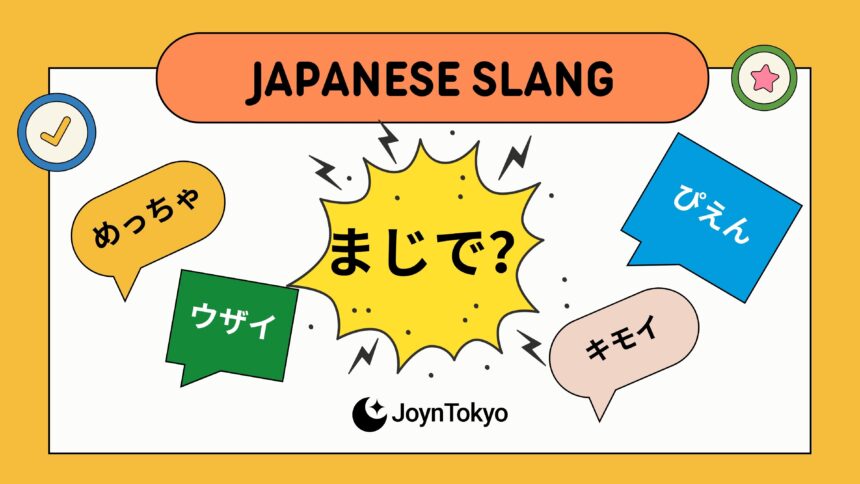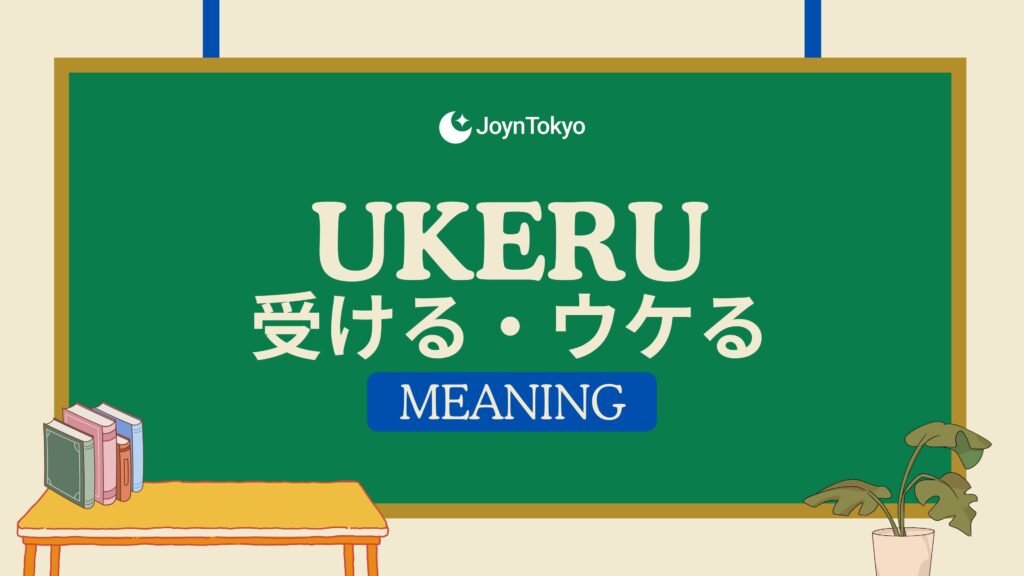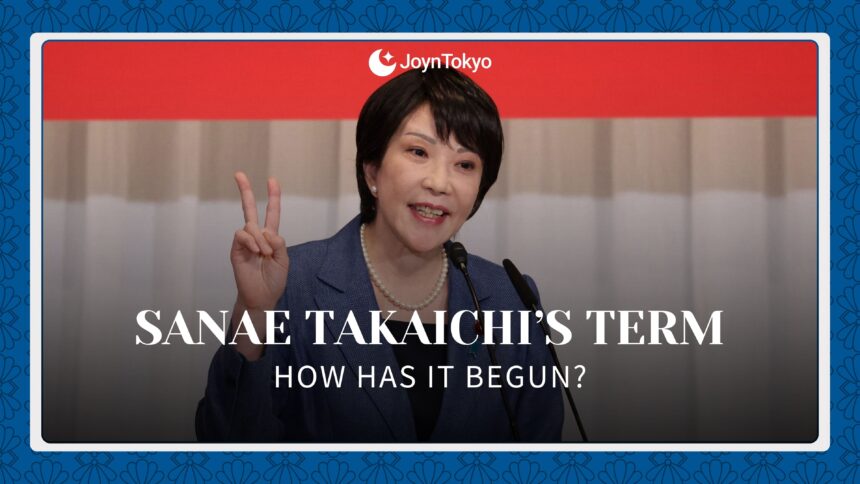Japanese slang words can sometimes feel like a secret code, but cracking it is the quickest route to having relaxed, real-world conversation. This guide unpacks what wakamono kotoba means, when it fits, and — most importantly — how to drop it without sounding forced.
12 Must-Know Japanese Slang Words
Below are twelve high-frequency terms you will actually hear in 2025, sorted by vibe.
1. Surprise & Excitement
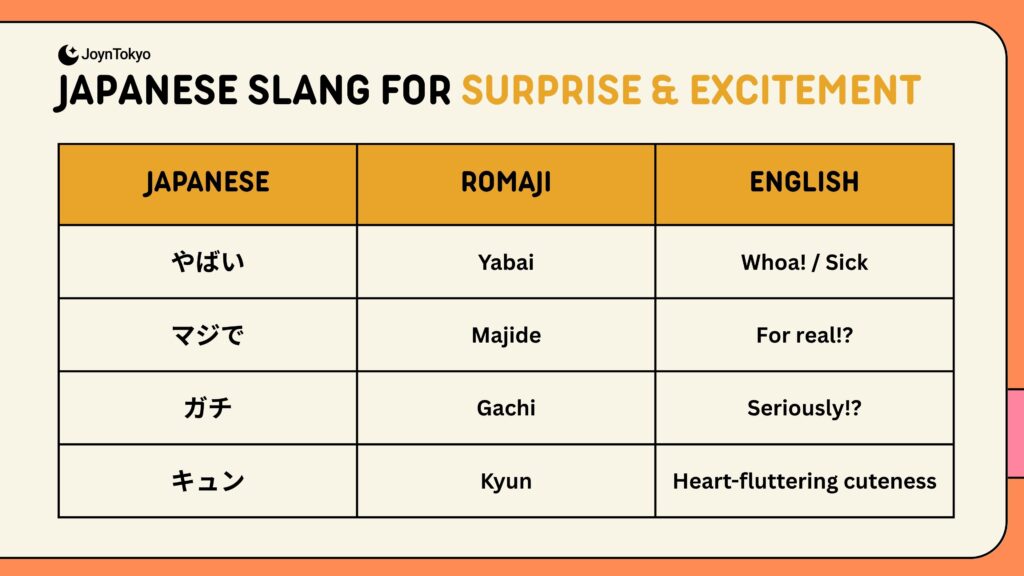
- Yabai — “Whoa!” Like “sick” in English, this can be positive or negative. Yabai, that curry is spicy!
- Majide? — “For real?”, said in disbelief or disappointment. Majide? You finished already?
- Gachi — “Seriously; hard-core.” She’s gachi into indie bands.
- Kyun — Heart-fluttering cuteness, often heard in anime.That cat video was pure kyun.
2. Annoyance and Dislike
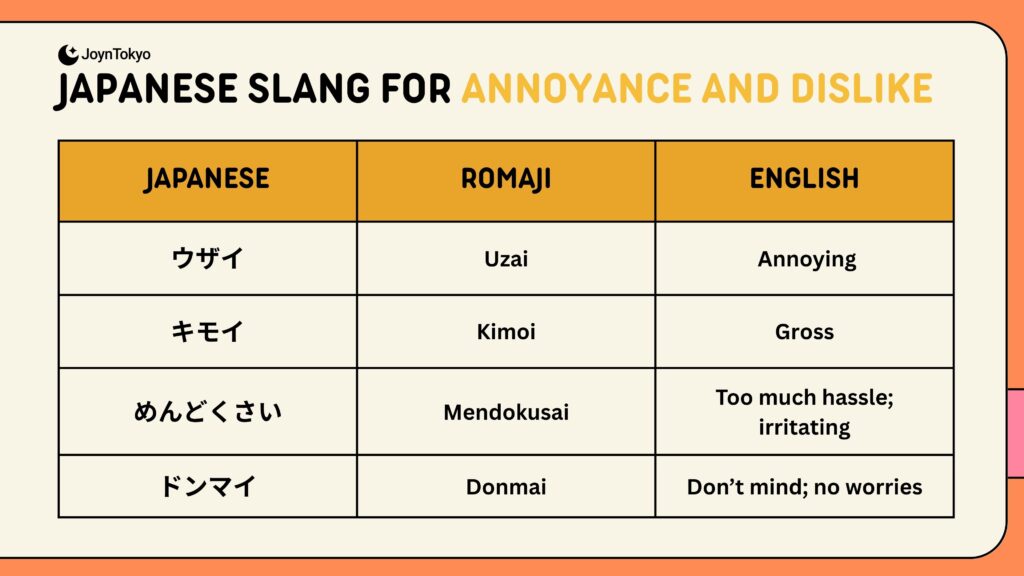
- Uzai — “Annoying.” A contraction of the more standard “urusai.” Ads before the video are uzai.
- Kimoi — “Gross,” a shortened form ofkimochi warui. Mouldy natto? Kimoi…
- Mendokusai — “Too much hassle; irritating” Paperwork today? Mendokusai.
- Donmai — “Don’t mind; no worries,” taken from the English. Communicates a casual relaxation. Dropped your phone? Donmai!
Read More
3. Online and Meme Culture
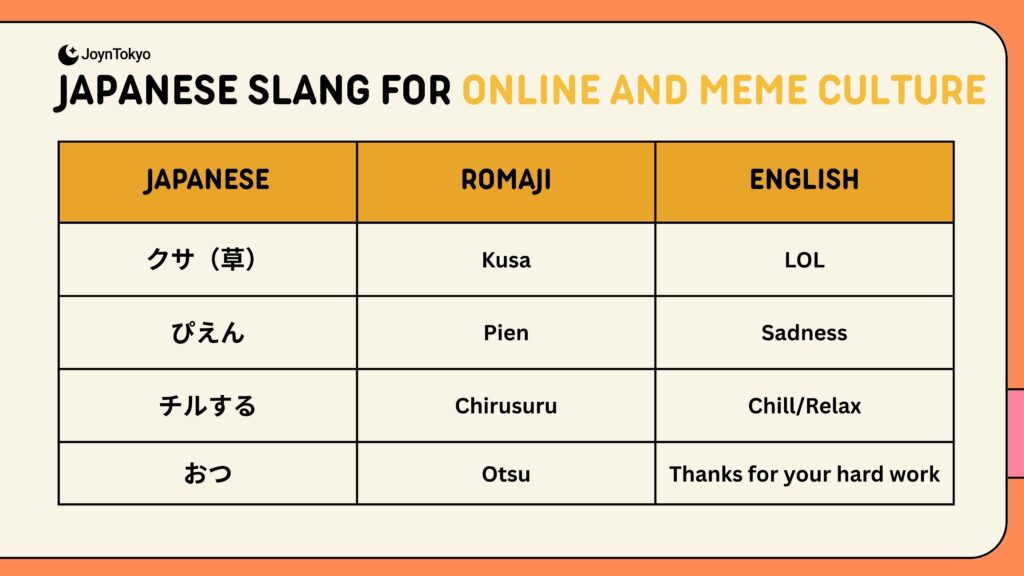
- Kusa — “LOL,” the word for “grass”, is invoked as it evokes the image of grass when one types “w w w”, where “w” is net slang for “warau,” or “laugh.” Your dad joke is kusa.
- Pien — Semi-joking sadness. Missed the last train… pien.
- Chill suru — To relax. Let’s chill suru at home tonight.
- Otsu — A quick “thanks for your hard work.” Game over—otsu!
Tip: Plug any unfamiliar term into a free dictionary such as Jisho.org or scan Twitter’s trending tab to test if it is still cool. (Cultural Affairs Agency language survey, 2024)
Why Youth Slang Matters in Modern Japan
Every language has an informal layer, but in Japan slang refreshes at lightning speed. Wakamono kotoba (literally “young-people’s words”) signals that you share pop-culture references and social media habits with Gen Z and millennials. Using it well can lubricate friendships, while misusing it can generate awkward silence, as they’ll think you’re 引く/hiku (cringe).
Japanese educators still prioritize textbook (標準語/hyoujungo (standard Japanese), yet daily talk on trains, in cafés, and across TikTok lives in a parallel universe of clipped syllables and inside jokes. Mastering a handful of phrases will help you follow those fast-moving conversations — and eventually join them.
Slang vs. Standard Japanese
Standard Japanese sticks to polite verb endings and full phrases. Slang trims or twists those forms for speed and style. Remember “otsu” – a two-syllable salute forged from the eight-syllable otsukaresama deshita.
How New Words Emerge
Slang is born wherever young people gather: idol fandoms, comedy shows, indie rap lyrics, Discord servers. A catchy punch-line can surge from TikTok to primetime TV within weeks, then vanish by next semester. Staying current means lurking on hashtag trends such as #今週の流行語 (“this week’s buzzwords”).
Choosing the Right Moment for Slang
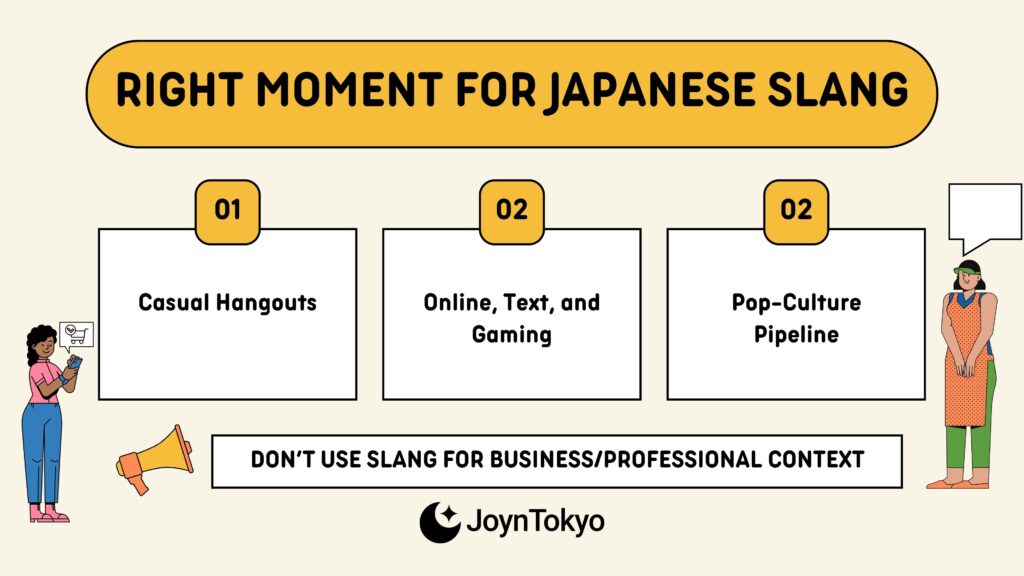
Context is everything. The same word that bonds you to classmates might shock a department head. Rule of thumb: mirror the formality of the person with higher social status.
Casual Hangouts
Among close friends, slang goes hand in hand withwarm conversations and friendships. A single sentence might string together yabai (wild), gachi (seriously), and uzai (annoying) without missing a beat.
Online, Text, and Gaming
Digital chat super-charges creativity. Numeric puns — like 4649 for yoroshiku — and emoji shorthand like pien are commonplace. Twitch-style spam of www (“lol”) eventually morphed into the noun kusa (“grass”).
Pop-Culture Pipeline
When an idol squeals majide? (“seriously?”) on variety TV, millions imitate it the next morning. Anime catchphrases follow the same path, so keep an ear out during opening and ending theme clips. But remember how quickly things change: oha (a contraction of ohaiyo, “good morning”) was hot one minute, then dropped the next.
How to Use Slang Without Face-Planting
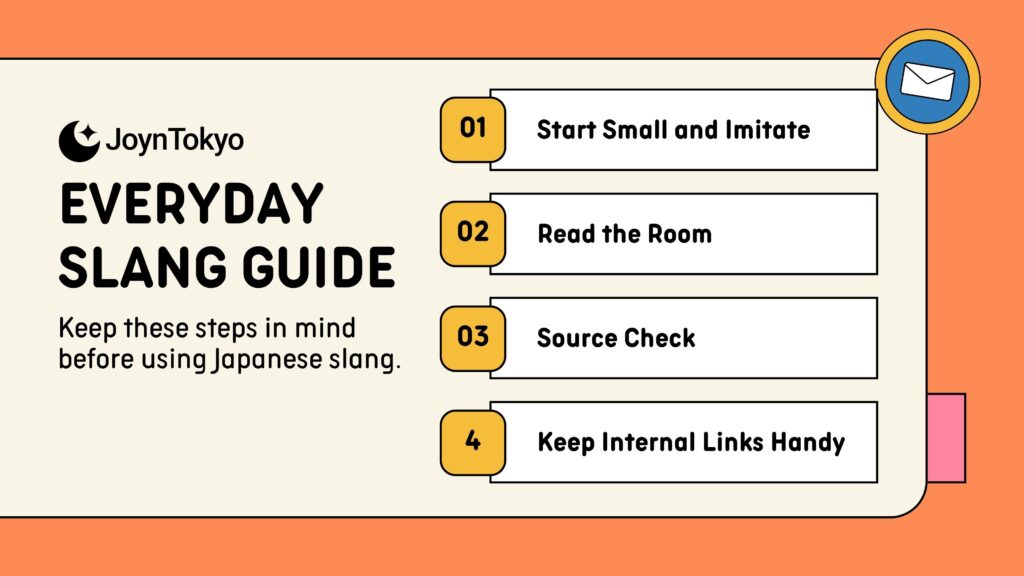
Slang can open doors, but only if you respect its unspoken rules.
Start Small and Imitate
Begin with low-risk words like otsu before graduating to punchier choices such as kimoi. Mimic the native intonation, as tone can decide whether words like yabai mean “awesome” or “awful.”
Read the Room
Don’t start slinging slang with supervisors, teachers, and new acquaintances, unless they use it first. Professional life in Japan still runs on keigo, or formal Japanese.
Source Check
Trends expire fast. Follow TikTok creators like @slangsensei or scroll #若者言葉 on Instagram to gauge freshness. If a word shows up mainly in nostalgic memes, it is past its sell-by date.
Keep Internal Links Handy
For deeper politeness rules, see our article “Learning Japanese in Japan: Your Roadmap to Fluency” here on JoynTokyo.
Staying Up-to-Date
Language is a living thing. Set alerts on Japanese Twitter for “今週の流行語” (konshu no hayarikotoba / this week’s buzzwords), tune into Sunday night variety shows, and jot new terms in your notes app. A quarterly purge of out-of-date terms will keep your slangfresh.
Key Takeaways
Wakamono kotoba is an ever-shifting mosaic, but even learning just a dozen expressions lets you laugh at inside jokes, bond with classmates and colleagues, and navigate online spaces with confidence. Keep listening, keep imitating, and keep up to date, and you’ll be yabai in no time.

